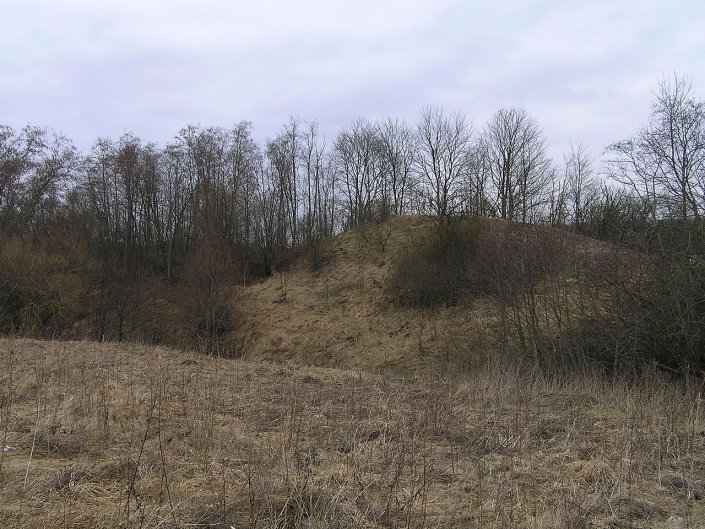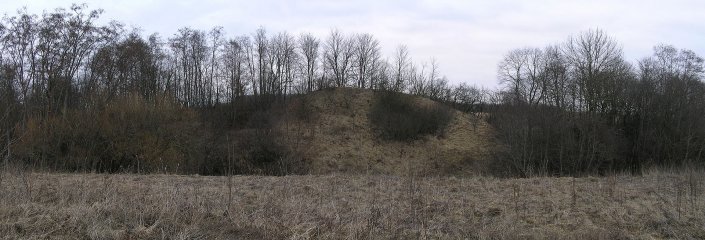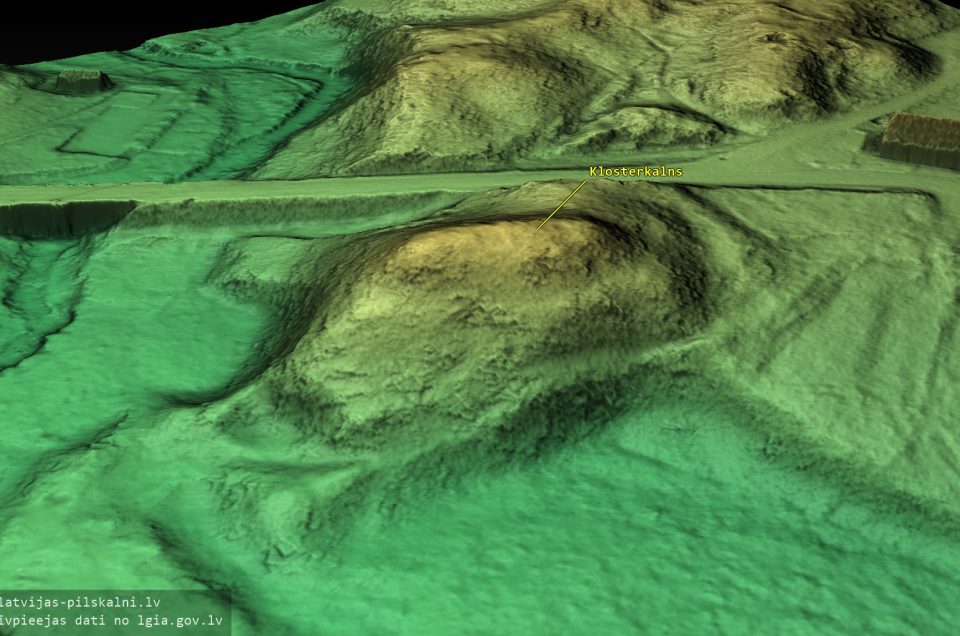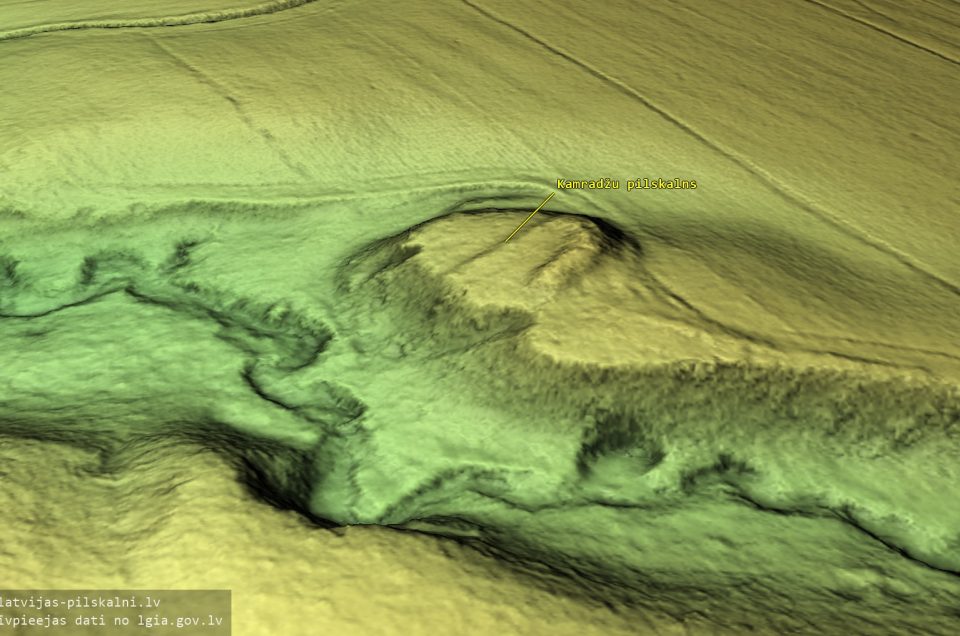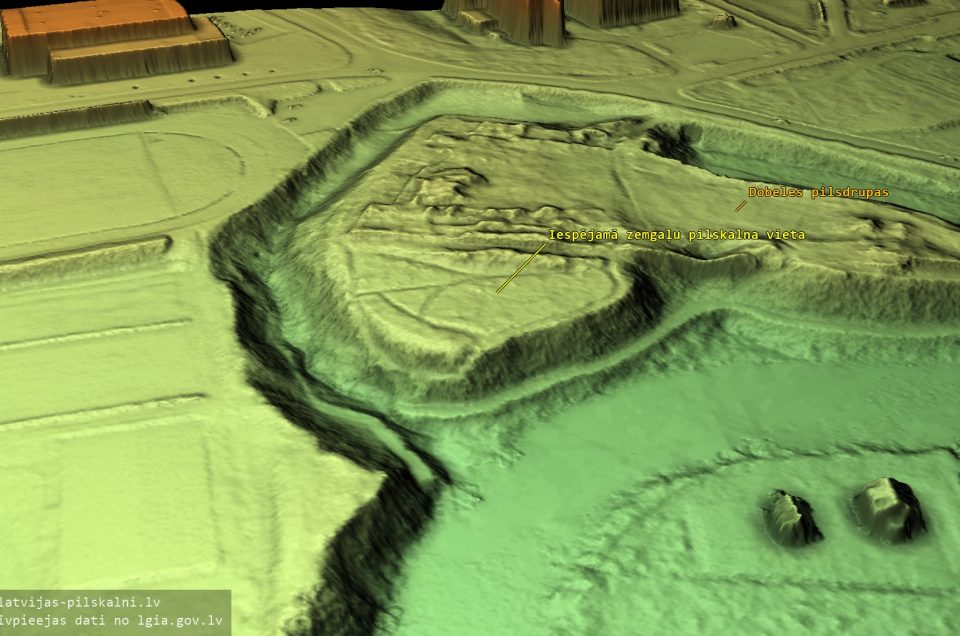The following text is a translation of Ernests Brastiņš’ 1926 book Latvijas pilskalni (Latvian hillforts), Volume 2: Zemgale and Augšzeme. Some of the geographical and archaeological information may be out of date.

Survey scale 1:1000. Contour interval 1 m. Surveyed on May 17, 1925.

Section drawing of Kamarde hillfort, A to B. Scale 1:1000.
Upon delimitation of the national border south of Bauska, the former boundary of the Kurzeme governorate with a few additional kilometres of land was redistributed to Latvia. Thus, a hillfort formerly in the Kaunas governorate now belongs to us.
It is located on the left bank of the Mūsa river, 12 km south of Bauska, in the Brūklāji village of Ceraukste parish, on the property of Vilis Pēkals. Kamarde manor which gives its name to the hillfort is situated one kilometre to the south east in the territory of Lithuania.

Area plan. Scale. 1:100.000.
The hillfort was constructed on a narrow promontory between the Mūsa river and a gully of a stream. 100 metres from the confluence of the stream and the river the promontory is intersected by a ditch and an earthwork, forming a northward-sloping hilltop delimited by steep slopes and embankment. The length of the hilltop is 50 m and it is triangular. The width of the hilltop is 25 m on the northern side but only 5 m on the southern.
It can be inferred that the southern end used to be much wider before a part of it collapsed into the river during a flood. The eroded bank exposes a white sandstone cliff topped with clay soil. This clay layer is grey to the depth of ca. 0.5 m. No artefacts have been found on the hilltop. The hill appears to have been plowed in the past, however the locals have no memory of it. Currently the hill is covered in short grass and some shrubbery towards the river.

Kamarde hillfort from the south.
The embankment rises 3 m above the hilltop and 20 m above the river. The hillfort entrance could have been along the southern end. The damage consists of the erosion towards the river and several small pits dug by looters.
Legends say that a castle sunk here and the hill arose in its place. The hill is said to be haunted. Once upon a time, a Jew pitched a tent on the hilltop, was tortured by the devil at midnight and ran away.
Kamarde hillfort has been described multiple times by J. Döring (Kurl. S. b. 1876 and 1882).
- Brastiņš E., Latvijas pilskalni. Zemgale un Augšzeme. — Pieminekļu Valde: Rīga, 1926.


